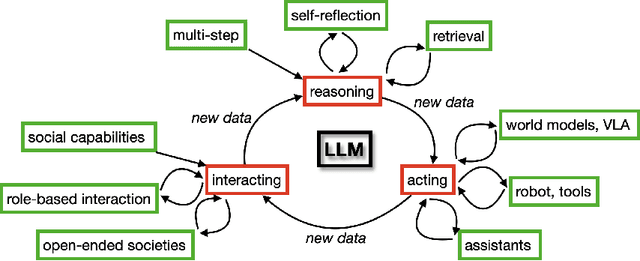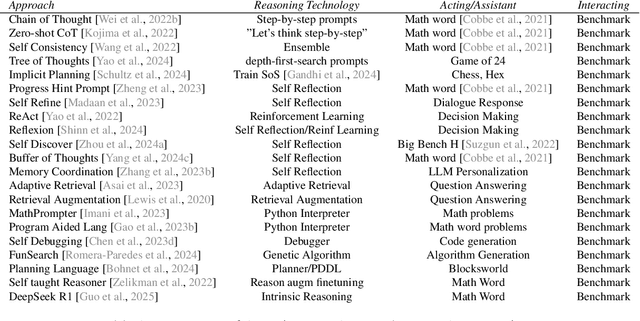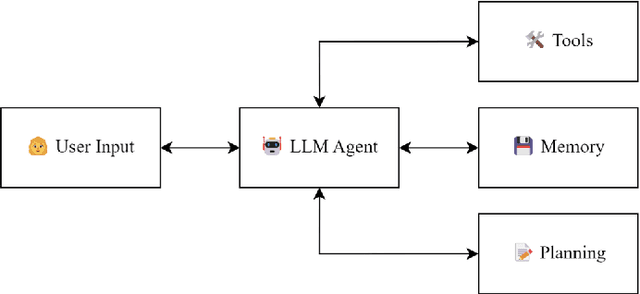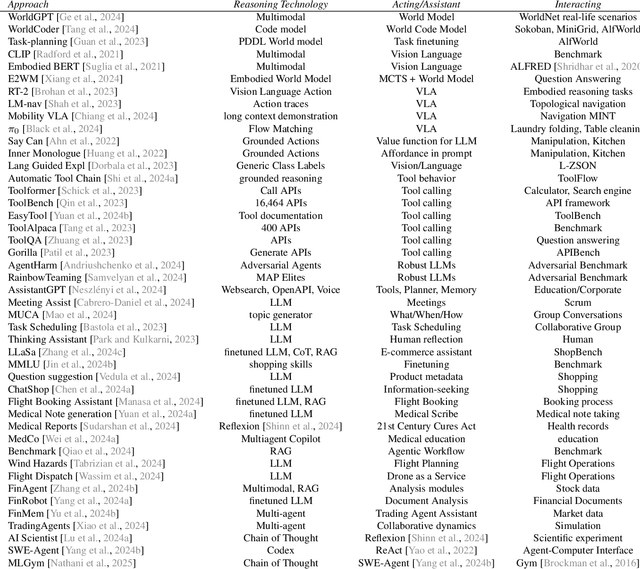Niki van Stein
Leveraging Lightweight Generators for Memory Efficient Continual Learning
Jun 24, 2025Abstract:Catastrophic forgetting can be trivially alleviated by keeping all data from previous tasks in memory. Therefore, minimizing the memory footprint while maximizing the amount of relevant information is crucial to the challenge of continual learning. This paper aims to decrease required memory for memory-based continuous learning algorithms. We explore the options of extracting a minimal amount of information, while maximally alleviating forgetting. We propose the usage of lightweight generators based on Singular Value Decomposition to enhance existing continual learning methods, such as A-GEM and Experience Replay. These generators need a minimal amount of memory while being maximally effective. They require no training time, just a single linear-time fitting step, and can capture a distribution effectively from a small number of data samples. Depending on the dataset and network architecture, our results show a significant increase in average accuracy compared to the original methods. Our method shows great potential in minimizing the memory footprint of memory-based continual learning algorithms.
LLaMEA-BO: A Large Language Model Evolutionary Algorithm for Automatically Generating Bayesian Optimization Algorithms
May 27, 2025Abstract:Bayesian optimization (BO) is a powerful class of algorithms for optimizing expensive black-box functions, but designing effective BO algorithms remains a manual, expertise-driven task. Recent advancements in Large Language Models (LLMs) have opened new avenues for automating scientific discovery, including the automatic design of optimization algorithms. While prior work has used LLMs within optimization loops or to generate non-BO algorithms, we tackle a new challenge: Using LLMs to automatically generate full BO algorithm code. Our framework uses an evolution strategy to guide an LLM in generating Python code that preserves the key components of BO algorithms: An initial design, a surrogate model, and an acquisition function. The LLM is prompted to produce multiple candidate algorithms, which are evaluated on the established Black-Box Optimization Benchmarking (BBOB) test suite from the COmparing Continuous Optimizers (COCO) platform. Based on their performance, top candidates are selected, combined, and mutated via controlled prompt variations, enabling iterative refinement. Despite no additional fine-tuning, the LLM-generated algorithms outperform state-of-the-art BO baselines in 19 (out of 24) BBOB functions in dimension 5 and generalize well to higher dimensions, and different tasks (from the Bayesmark framework). This work demonstrates that LLMs can serve as algorithmic co-designers, offering a new paradigm for automating BO development and accelerating the discovery of novel algorithmic combinations. The source code is provided at https://github.com/Ewendawi/LLaMEA-BO.
Evolutionary Computation and Large Language Models: A Survey of Methods, Synergies, and Applications
May 21, 2025Abstract:Integrating Large Language Models (LLMs) and Evolutionary Computation (EC) represents a promising avenue for advancing artificial intelligence by combining powerful natural language understanding with optimization and search capabilities. This manuscript explores the synergistic potential of LLMs and EC, reviewing their intersections, complementary strengths, and emerging applications. We identify key opportunities where EC can enhance LLM training, fine-tuning, prompt engineering, and architecture search, while LLMs can, in turn, aid in automating the design, analysis, and interpretation of ECs. The manuscript explores the synergistic integration of EC and LLMs, highlighting their bidirectional contributions to advancing artificial intelligence. It first examines how EC techniques enhance LLMs by optimizing key components such as prompt engineering, hyperparameter tuning, and architecture search, demonstrating how evolutionary methods automate and refine these processes. Secondly, the survey investigates how LLMs improve EC by automating metaheuristic design, tuning evolutionary algorithms, and generating adaptive heuristics, thereby increasing efficiency and scalability. Emerging co-evolutionary frameworks are discussed, showcasing applications across diverse fields while acknowledging challenges like computational costs, interpretability, and algorithmic convergence. The survey concludes by identifying open research questions and advocating for hybrid approaches that combine the strengths of EC and LLMs.
Towards a Deeper Understanding of Reasoning Capabilities in Large Language Models
May 15, 2025Abstract:While large language models demonstrate impressive performance on static benchmarks, the true potential of large language models as self-learning and reasoning agents in dynamic environments remains unclear. This study systematically evaluates the efficacy of self-reflection, heuristic mutation, and planning as prompting techniques to test the adaptive capabilities of agents. We conduct experiments with various open-source language models in dynamic environments and find that larger models generally outperform smaller ones, but that strategic prompting can close this performance gap. Second, a too-long prompt can negatively impact smaller models on basic reactive tasks, while larger models show more robust behaviour. Third, advanced prompting techniques primarily benefit smaller models on complex games, but offer less improvement for already high-performing large language models. Yet, we find that advanced reasoning methods yield highly variable outcomes: while capable of significantly improving performance when reasoning and decision-making align, they also introduce instability and can lead to big performance drops. Compared to human performance, our findings reveal little evidence of true emergent reasoning. Instead, large language model performance exhibits persistent limitations in crucial areas such as planning, reasoning, and spatial coordination, suggesting that current-generation large language models still suffer fundamental shortcomings that may not be fully overcome through self-reflective prompting alone. Reasoning is a multi-faceted task, and while reasoning methods like Chain of thought improves multi-step reasoning on math word problems, our findings using dynamic benchmarks highlight important shortcomings in general reasoning capabilities, indicating a need to move beyond static benchmarks to capture the complexity of reasoning.
Why Are You Wrong? Counterfactual Explanations for Language Grounding with 3D Objects
May 09, 2025Abstract:Combining natural language and geometric shapes is an emerging research area with multiple applications in robotics and language-assisted design. A crucial task in this domain is object referent identification, which involves selecting a 3D object given a textual description of the target. Variability in language descriptions and spatial relationships of 3D objects makes this a complex task, increasing the need to better understand the behavior of neural network models in this domain. However, limited research has been conducted in this area. Specifically, when a model makes an incorrect prediction despite being provided with a seemingly correct object description, practitioners are left wondering: "Why is the model wrong?". In this work, we present a method answering this question by generating counterfactual examples. Our method takes a misclassified sample, which includes two objects and a text description, and generates an alternative yet similar formulation that would have resulted in a correct prediction by the model. We have evaluated our approach with data from the ShapeTalk dataset along with three distinct models. Our counterfactual examples maintain the structure of the original description, are semantically similar and meaningful. They reveal weaknesses in the description, model bias and enhance the understanding of the models behavior. Theses insights help practitioners to better interact with systems as well as engineers to improve models.
BLADE: Benchmark suite for LLM-driven Automated Design and Evolution of iterative optimisation heuristics
Apr 28, 2025Abstract:The application of Large Language Models (LLMs) for Automated Algorithm Discovery (AAD), particularly for optimisation heuristics, is an emerging field of research. This emergence necessitates robust, standardised benchmarking practices to rigorously evaluate the capabilities and limitations of LLM-driven AAD methods and the resulting generated algorithms, especially given the opacity of their design process and known issues with existing benchmarks. To address this need, we introduce BLADE (Benchmark suite for LLM-driven Automated Design and Evolution), a modular and extensible framework specifically designed for benchmarking LLM-driven AAD methods in a continuous black-box optimisation context. BLADE integrates collections of benchmark problems (including MA-BBOB and SBOX-COST among others) with instance generators and textual descriptions aimed at capability-focused testing, such as generalisation, specialisation and information exploitation. It offers flexible experimental setup options, standardised logging for reproducibility and fair comparison, incorporates methods for analysing the AAD process (e.g., Code Evolution Graphs and various visualisation approaches) and facilitates comparison against human-designed baselines through integration with established tools like IOHanalyser and IOHexplainer. BLADE provides an `out-of-the-box' solution to systematically evaluate LLM-driven AAD approaches. The framework is demonstrated through two distinct use cases exploring mutation prompt strategies and function specialisation.
Agentic Large Language Models, a survey
Mar 29, 2025



Abstract:There is great interest in agentic LLMs, large language models that act as agents. We review the growing body of work in this area and provide a research agenda. Agentic LLMs are LLMs that (1) reason, (2) act, and (3) interact. We organize the literature according to these three categories. The research in the first category focuses on reasoning, reflection, and retrieval, aiming to improve decision making; the second category focuses on action models, robots, and tools, aiming for agents that act as useful assistants; the third category focuses on multi-agent systems, aiming for collaborative task solving and simulating interaction to study emergent social behavior. We find that works mutually benefit from results in other categories: retrieval enables tool use, reflection improves multi-agent collaboration, and reasoning benefits all categories. We discuss applications of agentic LLMs and provide an agenda for further research. Important applications are in medical diagnosis, logistics and financial market analysis. Meanwhile, self-reflective agents playing roles and interacting with one another augment the process of scientific research itself. Further, agentic LLMs may provide a solution for the problem of LLMs running out of training data: inference-time behavior generates new training states, such that LLMs can keep learning without needing ever larger datasets. We note that there is risk associated with LLM assistants taking action in the real world, while agentic LLMs are also likely to benefit society.
Optimizing Photonic Structures with Large Language Model Driven Algorithm Discovery
Mar 25, 2025Abstract:We study how large language models can be used in combination with evolutionary computation techniques to automatically discover optimization algorithms for the design of photonic structures. Building on the Large Language Model Evolutionary Algorithm (LLaMEA) framework, we introduce structured prompt engineering tailored to multilayer photonic problems such as Bragg mirror, ellipsometry inverse analysis, and solar cell antireflection coatings. We systematically explore multiple evolutionary strategies, including (1+1), (1+5), (2+10), and others, to balance exploration and exploitation. Our experiments show that LLM-generated algorithms, generated using small-scale problem instances, can match or surpass established methods like quasi-oppositional differential evolution on large-scale realistic real-world problem instances. Notably, LLaMEA's self-debugging mutation loop, augmented by automatically extracted problem-specific insights, achieves strong anytime performance and reliable convergence across diverse problem scales. This work demonstrates the feasibility of domain-focused LLM prompts and evolutionary approaches in solving optical design tasks, paving the way for rapid, automated photonic inverse design.
Code Evolution Graphs: Understanding Large Language Model Driven Design of Algorithms
Mar 20, 2025Abstract:Large Language Models (LLMs) have demonstrated great promise in generating code, especially when used inside an evolutionary computation framework to iteratively optimize the generated algorithms. However, in some cases they fail to generate competitive algorithms or the code optimization stalls, and we are left with no recourse because of a lack of understanding of the generation process and generated codes. We present a novel approach to mitigate this problem by enabling users to analyze the generated codes inside the evolutionary process and how they evolve over repeated prompting of the LLM. We show results for three benchmark problem classes and demonstrate novel insights. In particular, LLMs tend to generate more complex code with repeated prompting, but additional complexity can hurt algorithmic performance in some cases. Different LLMs have different coding ``styles'' and generated code tends to be dissimilar to other LLMs. These two findings suggest that using different LLMs inside the code evolution frameworks might produce higher performing code than using only one LLM.
Diffusion Models for Tabular Data: Challenges, Current Progress, and Future Directions
Feb 24, 2025Abstract:In recent years, generative models have achieved remarkable performance across diverse applications, including image generation, text synthesis, audio creation, video generation, and data augmentation. Diffusion models have emerged as superior alternatives to Generative Adversarial Networks (GANs) and Variational Autoencoders (VAEs) by addressing their limitations, such as training instability, mode collapse, and poor representation of multimodal distributions. This success has spurred widespread research interest. In the domain of tabular data, diffusion models have begun to showcase similar advantages over GANs and VAEs, achieving significant performance breakthroughs and demonstrating their potential for addressing unique challenges in tabular data modeling. However, while domains like images and time series have numerous surveys summarizing advancements in diffusion models, there remains a notable gap in the literature for tabular data. Despite the increasing interest in diffusion models for tabular data, there has been little effort to systematically review and summarize these developments. This lack of a dedicated survey limits a clear understanding of the challenges, progress, and future directions in this critical area. This survey addresses this gap by providing a comprehensive review of diffusion models for tabular data. Covering works from June 2015, when diffusion models emerged, to December 2024, we analyze nearly all relevant studies, with updates maintained in a \href{https://github.com/Diffusion-Model-Leiden/awesome-diffusion-models-for-tabular-data}{GitHub repository}. Assuming readers possess foundational knowledge of statistics and diffusion models, we employ mathematical formulations to deliver a rigorous and detailed review, aiming to promote developments in this emerging and exciting area.
 Add to Chrome
Add to Chrome Add to Firefox
Add to Firefox Add to Edge
Add to Edge